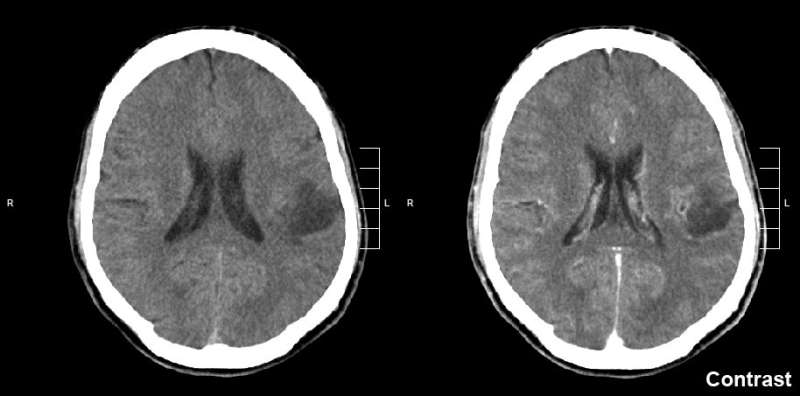This article has been reviewed according to Science X's editorial process and policies. Editors have highlighted the following attributes while ensuring the content's credibility:
fact-checked
trusted source
proofread
FDA approves new therapy for glioma patients for first time in decades

Vorasidenib has been approved by the U.S. Food and Drug Administration (FDA) for patients with Grade 2 gliomas with IDH1 or IDH2 mutations.
Based on evidence from the INDIGO clinical trial, a global Phase III, double-blinded, randomized clinical trial, vorasidenib more than doubled progression-free survival and delayed the need for treatment with radiation and chemotherapy for patients with Grade 2 IDH-mutant glioma after surgery to remove the tumor. INDIGO was the first Phase III clinical trial of a molecularly targeted therapy for IDH-mutant glioma.
"The INDIGO trial shows that IDH inhibitors can work in low grade gliomas with the IDH mutation," says Patrick Y. Wen, MD, Director of the Center for Neuro-Oncology at Dana-Farber Cancer Institute and one of the trial's three study chairs. "The last drug that was approved for low grade gliomas was in 1999, so this will be the first new drug in a long time."
Grade 2 gliomas are incurable brain tumors. IDH mutations are found in the vast majority of lower grade gliomas.
A key benefit of vorasidenib therapy is that it can delay the need for treatment with radiation and chemotherapy. Current treatment involves surgery followed by radiation and chemotherapy. Radiation and chemotherapy are effective treatments, but after many years of treatment, patients will experience signs of cognitive dysfunction normally seen in much older people.
"These patients are often young, in their 30s or 40s. But 10 to 20 years later, even if they are doing well from the point of their tumor, they often show signs of dementia after radiation and chemotherapy," says Wen. "If this medicine can delay the start of these treatments, it would delay cognitive dysfunction in patients and preserve their quality of life."
The INDIGO trial enrolled 331 patients with Grade 2 IDH-mutated gliomas who had undergone surgery to remove the tumor. Patients who enrolled did not immediately need radiation and chemotherapy and instead were in a watch-and-wait period. During this time, they were randomized to take either vorasidenib or placebo.
Patients taking vorasidenib had a median of 27.7 months progression-free survival compared to 11.1 months for patients taking a placebo. The time to next treatment for patients taking the placebo was 17.8 months.
For those taking vorasidenib, a median had not been determined at the most recent analysis because only 11.3% of these patients had so far progressed to the next treatment. The drug also had a manageable safety profile.
"The trial found no difference in quality of life compared with placebo," says Wen. "Tolerability is important because this is a drug that we expect people to be on for many years."
The approval opens the door to several new possibilities for patients. For instance, Wen has an ongoing trial investigating vorasidenib with immunotherapy and there are planned trials combining vorasidenib with standard radiotherapy and chemotherapy.




















